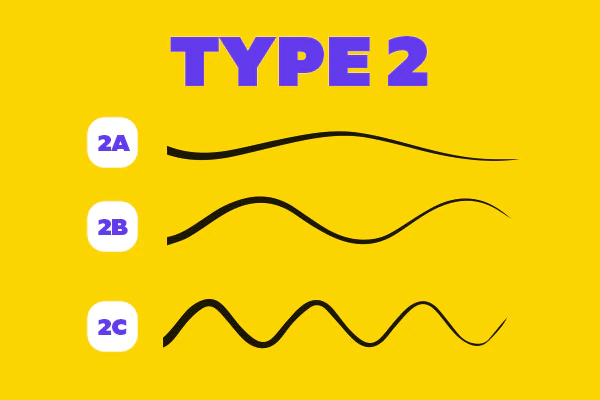Hair is a vital aspect of our appearance and can greatly impact our self-confidence and overall appearance. Understanding the different categories of hair can help us choose the right hairstyle, care for our hair, and address any hair concerns we may have.
Your hair type is primarily based on your hair’s curl pattern. The amount of curl in your hair is determined by your hair follicle. The shape of your follicle determines whether your hair is:
- Straight – Type 1
- Wavy – Type 2
- Curly – Type 3
- Coily – Type 4
These types are further divided into subcategories based on the tightness or looseness of the curls and coils. It may sound simple, but like most attempts to define human characteristics, it isn’t.
Type 1: Straight
Straight hair is smooth and has little to no natural curl or wave. It is the most common hair type and is relatively easy to style and maintain. Type 1 hair has a tendency to become oily, so many stylists recommend that you check the label to be sure the product you’re buying isn’t going to add extra oil to your hair. Washing your hair too often can cause your scalp to overproduce oils, so dry shampoo is a boon for people with straight, oily hair.
Type 2: Wavy
Type 2A
Type 2A hair is characterized by a slight wave pattern that is not tightly defined. The natural state of type 2 hair is a gentle, tousled texture. People with Type 2A hair should steer clear of oil-based or creamy products. Instead, stylists recommend that you boost the base with a light mousse or use a gel to define those waves.
Type 2B
This is very similar to type 2A, except that it has a slightly more defined wave in the shape of an ‘S’. It may require a little more effort to straighten, but it’s easy to create that beachy look with a spritz of salt spray. Type 2B is ideal for the balayage trend, where stylists hand-paint color on the outer layer of hair.
Type 2C
The most well-defined S-shaped waves are type 2C. The wave pattern may begin close to the crown and tumble downward. Type 2C hair is often thick and can be prone to frizz in damp weather.
Type 3: Curly
Type 3A
With type 3A hair, S-shaped curls form loose loops. The curls have a circumference a little wider than the large end of a taper candle. This type of curl usually occurs if you have fine hair, and is determined by really loose, big curls. Maintaining and styling this hair type is not really difficult because of the size of the curls.
Type 3B
This is considered to be the best and most envied type of curl. These curls form perfect ringlets and are often seen on a lot of celebrities. The best part about this curl type is that it is neither too thick nor too thin, making it absolutely easy to style and maintain. To maintain their characteristic spiral shape, these ringlets generally need moisture.
Type 3C
These curls are tight and springy; they would coil perfectly around a drinking straw. To preserve the definition in these corkscrew curls, take a hands-on approach. If you have type 3c curls, you probably notice that your curls are coarse and not as soft as you’d like. Using the right product can help soften your curls a bit.
Type 4: Coily
Type 4 hair, also known as Coily or Kinky hair refers to hair that has a tight, curled pattern. Coily hair is often more dry and brittle than other hair types, and it can be prone to breakage. Because of its tightly curled pattern, coily hair can be more difficult to detangle and style, but with the right products and techniques, it can be healthy and beautiful.
Type 4A
The 4A hair type has a distinct S-shaped curl pattern, which is tight and coils around a chopstick. Type 4A is also usually very thin and delicate, but appears really thick, thanks to the tight curls. You need to be extremely gentle when washing and styling your hair as it is very prone to breakage.
Type 4B
The 4B hair type is characterized by curls that have a zig-zag pattern and can be thick or thin, depending on your hair texture. Even though this type of hair is soft to the touch, it is also quite fragile and can break quite easily, especially if you tend to comb your hair often. One popular technique for defining and accentuating your curls is shingling.
Type 4C
Type 4C hair is tightly coiled and can often appear super coily and frizzy. Its tight z-shaped curls are often the reason for the shape of a natural afro. It’s really easy to break them if you comb roughly or too often, and it’s vital to frequently nourish the hair with rich conditioners.
To determine your hair pattern, wash your hair and leave it without a conditioner or a serum. You can observe how your hair looks in a mirror. You can also take a few strands from your comb and lay it on a white paper and observe the general pattern of how it curls or lays flat to get a fair idea about your hair type.






